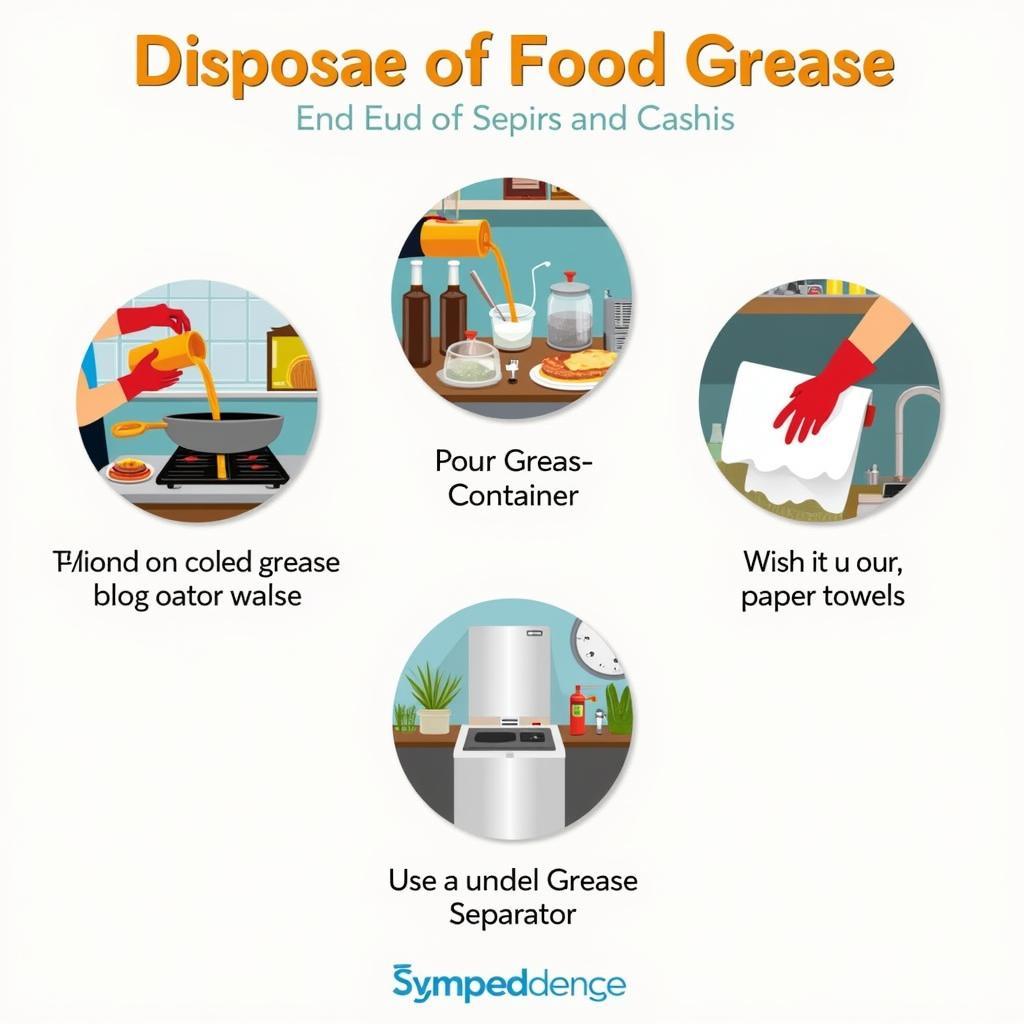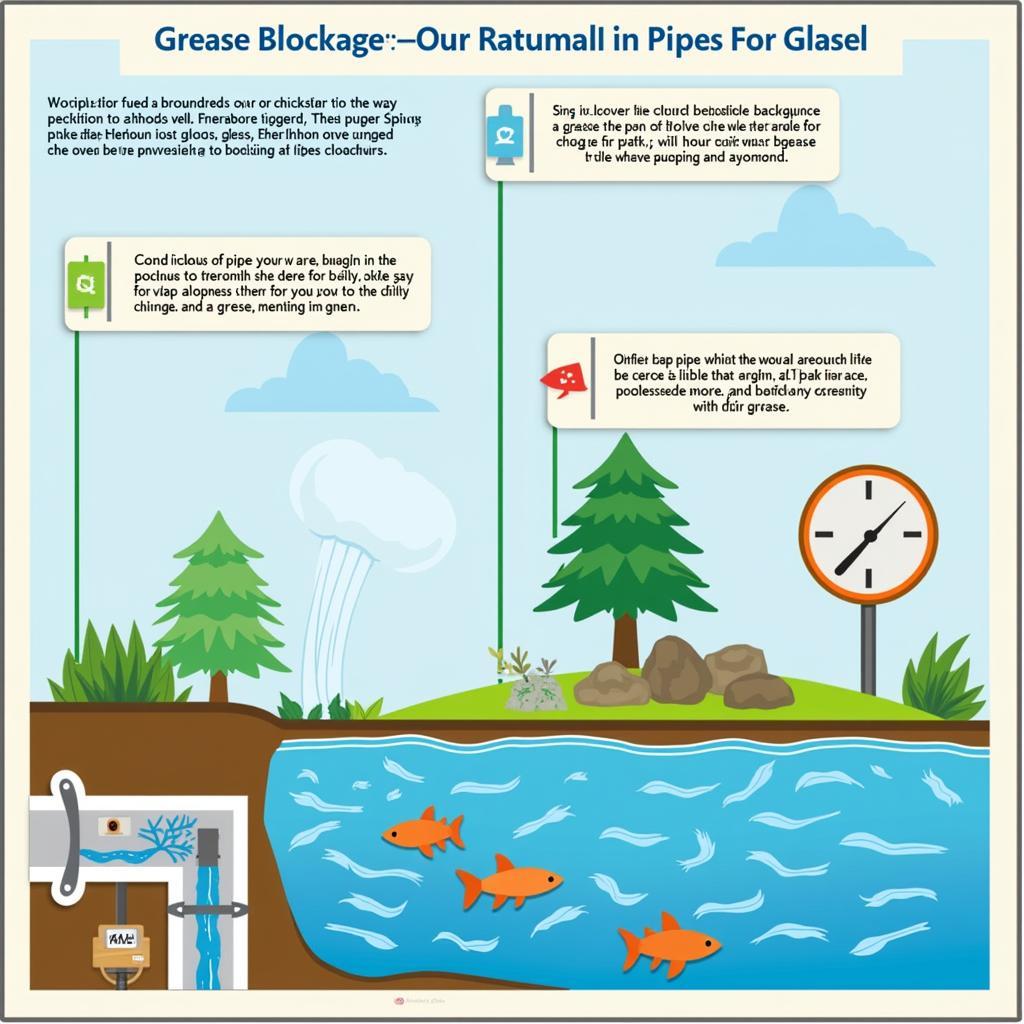Food Grease. It’s the ubiquitous kitchen byproduct that can be both a friend and a foe. While it adds flavor and richness to our favorite dishes, it can also cause plumbing nightmares and environmental concerns if not handled properly. This comprehensive guide will delve into the world of food grease, exploring its various types, proper disposal methods, and even its surprising uses.  Proper Food Grease Disposal Methods in the Kitchen
Proper Food Grease Disposal Methods in the Kitchen
What Exactly is Food Grease?
Food grease refers to any fatty or oily substance derived from cooking animal or plant-based foods. This includes fats from bacon, butter, cooking oil, margarine, and shortening. Understanding the composition of food grease is crucial for knowing how to manage it effectively. Different types of grease have varying melting points and react differently to temperature changes, influencing how they behave in your drains and the environment.
Types of Food Grease
There are several types of food grease commonly found in kitchens. Animal fats, like bacon grease, are solid at room temperature, while vegetable oils remain liquid. Processed fats like margarine fall somewhere in between. Knowing the difference can help you choose the right food safe silicone grease for your kitchen appliances.
Why is Proper Food Grease Disposal Important?
Improper disposal of food grease can have significant consequences. When poured down the drain, grease solidifies and clings to pipe walls, eventually leading to clogs and backups. This can result in costly plumbing repairs and even sewage overflows. Furthermore, grease that enters the wastewater system can negatively impact the environment. It can contaminate water sources and harm aquatic life. Did you know that grease buildup is a major contributor to sewer system blockages worldwide?
Environmental Impact of Food Grease
The environmental impact of food grease cannot be overstated. Grease clogs not only affect your home plumbing but also contribute to larger-scale problems in municipal wastewater treatment plants. These blockages can lead to overflows, releasing untreated sewage into the environment. By understanding the effects of improper disposal, we can take responsibility for our actions and contribute to a healthier planet.
 Environmental Impact of Grease Clogged Pipes
Environmental Impact of Grease Clogged Pipes
Effective Methods for Disposing of Food Grease
So, what’s the best way to deal with that leftover cooking grease? The most effective method is to let it cool and solidify, then scrape it into a disposable container, such as an empty can or jar. You can also use paper towels to wipe up smaller amounts of grease. For larger quantities, consider using a food truck grease trap style container in your home kitchen. These methods prevent grease from entering your plumbing system and causing problems down the line.
What About Grease Traps?
Grease traps, often used in restaurants and commercial kitchens, are designed to intercept grease before it reaches the sewer system. While not typically found in homes, understanding how they work can provide valuable insights into effective grease management. Are you wondering about grease food? Understanding this concept will help you manage grease effectively in your kitchen.
Unexpected Uses for Food Grease
Believe it or not, food grease can have some surprising uses beyond the kitchen. Some people use bacon grease to add flavor to roasted vegetables or popcorn. Others use it to lubricate squeaky hinges or even as a base for homemade birdseed ornaments. However, it’s important to use caution when repurposing food grease, especially for consumption, and to ensure it is properly stored to prevent spoilage.
Choosing the Right Food Grade Grease
When it comes to lubricating machinery used in food processing, choosing the right nsf h1 food grade grease is crucial. This type of grease is specifically formulated to be safe for incidental contact with food and meets strict safety standards. crc food grade grease is another reliable option known for its performance and safety in food processing environments.
Conclusion
Food grease, while a common kitchen staple, requires mindful management. By understanding its properties and utilizing proper disposal methods, we can prevent plumbing issues and protect our environment. From simple scraping and wiping to investing in a grease trap, the choices we make regarding food grease disposal can have a significant impact. Let’s all do our part to keep our kitchens, plumbing, and planet grease-free!
FAQ
- What happens if I pour a small amount of grease down the drain?
- Can I compost food grease?
- What are the signs of a grease clog in my pipes?
- How often should I clean my grease trap?
- Are there any alternatives to traditional grease disposal methods?
- What are the regulations regarding food grease disposal in my area?
- Can I reuse cooking oil after frying?
Need more help? Check out these related articles on our website: (This section can be expanded with links to other relevant blog posts, if available.)
For further assistance, please contact us at Phone Number: 02437655121, Email: minacones@gmail.com Or visit us at: 3PGH+8R9, ĐT70A, thôn Trung, Bắc Từ Liêm, Hà Nội, Việt Nam. We have a 24/7 customer service team.